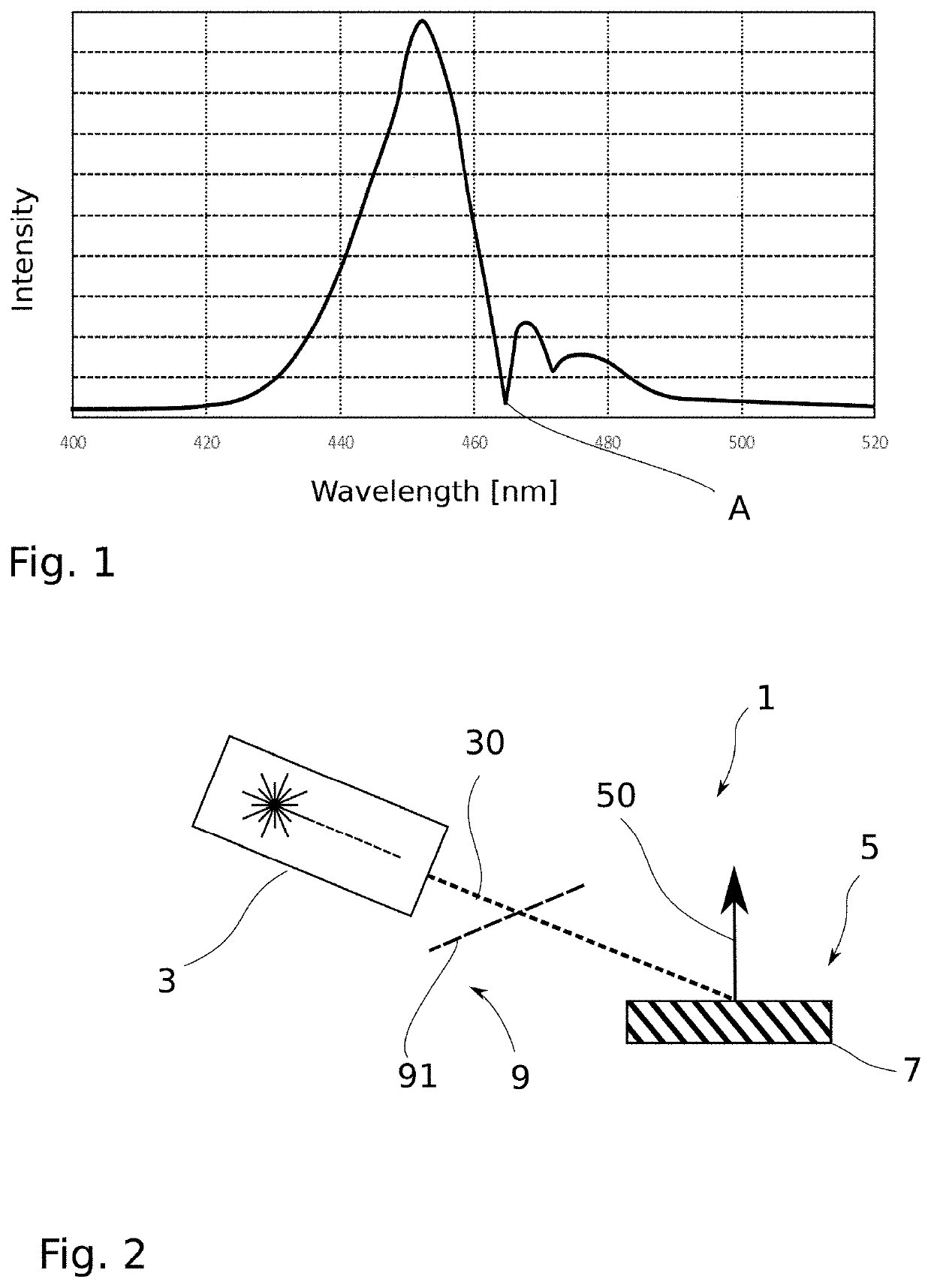Light source with photoluminescence emitter
a light source and photoluminescence technology, applied in the field of light sources, can solve the problems of poor color rendering index, no red converter known which provides all the good properties of cerium-doped yag, and poor efficiency of the light-emitting diode assembly, and achieves improved color rendering index, high efficiency, and high luminance
- Summary
- Abstract
- Description
- Claims
- Application Information
AI Technical Summary
Benefits of technology
Problems solved by technology
Method used
Image
Examples
Embodiment Construction
[0035]FIG. 1 schematically shows the spectrum of diffuse reflection of an Eu3+-doped ceramic converter that is excited by a blue light-emitting diode. The illustrated part of the spectrum is in the blue spectral range and essentially includes the blue excitation light of the light-emitting diode, which is scattered back at the converter. The spectrum of the light-emitting diode is represented as a broad peak in the spectrum. The narrow dip at about 465 nm, marked “A”, which can be seen in the spectrum of FIG. 1 and which almost reaches the ground level, reveals that for the absorption line at 465 nm absorption is 90% or more of the irradiated power. Thus, in principle, absorption of blue light is not bad in an Eu3+-doped material. Rather, the graph shows that the narrow absorption band of the Eu3+ ions, when compared to the rather broad spectrum of the LED, implies only low total absorption of the LED light and hence poorly effective photoluminescence excitation and thus results in ...
PUM
 Login to View More
Login to View More Abstract
Description
Claims
Application Information
 Login to View More
Login to View More - R&D
- Intellectual Property
- Life Sciences
- Materials
- Tech Scout
- Unparalleled Data Quality
- Higher Quality Content
- 60% Fewer Hallucinations
Browse by: Latest US Patents, China's latest patents, Technical Efficacy Thesaurus, Application Domain, Technology Topic, Popular Technical Reports.
© 2025 PatSnap. All rights reserved.Legal|Privacy policy|Modern Slavery Act Transparency Statement|Sitemap|About US| Contact US: help@patsnap.com



